Microsoft 365 Publisher is a versatile app that can be used to do so many different tasks. Publisher can be used to design business cards, posters, calendars, magazines, menus and so much more.
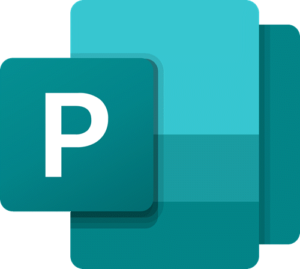
Microsoft Publisher Tips and Tricks
We will be looking at tips and tricks that can be used to enhance the Publisher experience.
- Organize resources before beginning a project
- How to keep all documents uniformed
- Move object just a bit
- Space between character
- Using guides to keep objects lined up
- Create your own style
- Create emphasis
- How to print full-color page with no white border
- Helpful shortcuts
- Sharing format
- Show visible boundaries
- Automatically align and print multiple items on one sheet.
How to use Publisher
1] Organize resources before beginning a project
The first step in every project is to plan properly. Organize items to be used in the Publisher project and try to create a mental picture of how they will look. if printed photographs and other items are to be added, scan or use other means to get them on the computer. Sketch and label the layout of the project so that it will be easier to put things in place on the computer. Decide on font types, font color, font style, font spacing, color schemes, and anything else that will make the project stand out.
This is the perfect time to decide on the paper or medium that will be used for the finished product. The different medium will require different colors, font styles, etc. if the publication is for screen purpose only, note colors, and fonts that will be best suited for this medium.
2] How to keep all documents uniformed
For professional purposes, it is always good to keep all documents looking uniformed. Uniformed font, uniformed color scheme, uniformed artwork, etc. This can be achieved by using one document as a template. A business card could be turned into a flyer or letterhead, this way the same font, color, and other elements could be kept so there is a uniformed look across all documents.
Read: How to create a Certificate using Microsoft Publisher.
3] Moving objects just a bit
It may be necessary to move objects from one place to another for alignment. Sometimes just a small move is needed. This can be achieved by simply selecting the object and pressing the arrow key in the desired direction. Moving objects with this method give a more accurate move than when using the mouse.
Read: How to create awesome Calendars with Microsoft Publisher.
4] Space between characters
Trying to fit texts on a page without going to another page or simply running out of space for texts in a project. The simple solution is to adjust the space between characters. This will allow a uniformed space between characters; however, no one will be able to see that space is smaller than the standard spacing.
This trick can also be used if you are trying to fill up a page or text box but don’t have enough content. Select all the text that needs the adjustment and press Ctrl + Shift } (to increase) or Ctrl + Shift { (to decrease).
5] Using grid lines to keep objects lined up
Keeping objects and other elements neat and lined up is a breeze with Publisher. Horizontal and vertical guides are available in Publisher. To access them requires a simple click on the horizontal or vertical rule, hold the primary mouse button and drag onto the document. The new lines will not be printed but whenever objects are aligned with them, the objects will snap in place.
6] Create your style
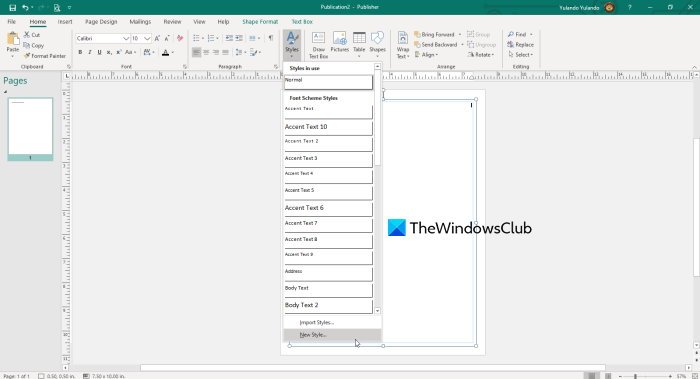
Publisher allows you to create your text styles. This allows for creativity and consistency throughout your project. You get to choose what your normal, body text, accent text, and other text looks like.
To create your style, go to Home then click Style. You will see the current style that is in use. Go to New Style.
Type the style name of your choice in the box labeled.
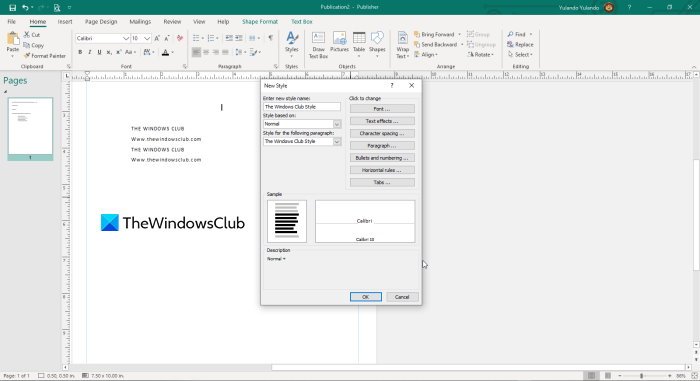
In Enter New Style Name you can choose the style for Font, Text Effects, Character Spacing, Bullets and Numbering, Horizontal Rules, and Tabs.
7] Create emphasis or break up the monotonous reading
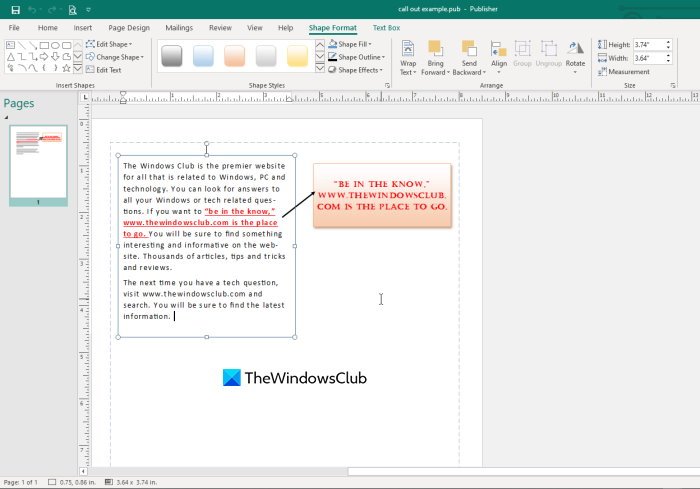
Long paragraphs of information can get readers bored and they might not want to read to the end, even if the information is vital. Monotonous paragraphs can be made interesting by using a text box to create a “call out.” Place a text box outside the paragraphs and type something interesting that is related to the paragraph, or something that you want to emphasize. Make the font larger and stylish and color the text box so it stands out.
Read: How to design Greeting Cards in Microsoft Publisher.
8] How to print full-color page with no white border
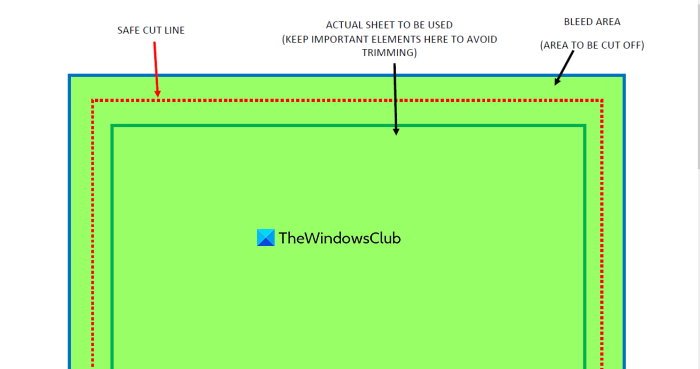
Trying to print a full-color sheet but want no white borders around it? You may try to print on a color sheet so that the print and the color of the sheet matches. That would be an extra cost and the two colors might not be a perfect match. Printers need to be able to hold the edges of the sheet as it passes through for printing. This leaves an unprintable border around the printed sheet. This can be quite frustrating when you need a full-color print.
The way around the unprintable border is to “bleed” print. Bleed is a term used to describe printing on a larger sheet of paper than needed, allowing the color background to print beyond the area needed then cut to size after printing.
For example, if you need a full-color print on a letter-size sheet (8.5×11), you can print on a slightly wider and longer sheet. Just allow the color to go beyond the letter-size. You then cut to the size of the letter-size sheet and this will allow the letter-size sheet to have the full color. Note: the bleed is the area that will be cut off.
Read: How to create a Business Card using Microsoft Publisher.
9] Helpful shortcuts
Shortcut keys are important because they could come in handy if there is a mouse or touchpad failure. Here are a few helpful keyboard shortcuts.
- Ctrl+ direction keys scroll the whole page in direction of the key pressed.
- Shift + direction key (left or right) will select or unselect letters, to the left or right of the text cursor.
- Shift + direction key (up or down) will select or unselect whole lines of text, above or below the text cursor.
- Ctrl + shift + direction (left or right) select or unselect whole words, to the left or right of the text cursor.
- Ctrl + shift + direction (up or down) will select whole lines above or below the text cursor.
- Ctrl+ direction button (Up or Down) will place the text cursor at the beginning of a paragraph above or below the text cursor.
- Ctrl + Space bar will reset all the selected text to the default text format.
10] Sharing format
Publisher makes it quite easy to share the format of one font to another font or a whole document. Simply select the text with the format you want then click on the Format painter icon and click the word to be changed. To change a whole sentence, paragraph, or document, hold the primary mouse button and drag across all the words to be changed.
11] Show visible boundaries
Showing visible boundaries is important when working with objects that may have the same color as the background. It is also important when aligning multiple objects on a page. Showing the visible boundaries will make alignment easier and objects more visible. Showing visible boundaries for text boxes will help when selecting them. To show the visible boundaries for an object select the Object then go to View, then check Boundaries. To remove the visible boundaries, select the object then go to view and uncheck boundaries.
12] Automatically align and print multiple items on one sheet
Do you have items that you might have created in a graphics software and need to print multiple on one sheet? It could be labels, photos, or anything else that just needs to be duplicated and printed. Well, Publisher allows you to add, adjust and then Publisher will automatically duplicate and print multiple copies on one sheet. You can open Publisher, choose the business card, change the size to whatever size you want, add the item to the sheet. You can add a light border to make cutting easier, Publisher will duplicate, then you can print.
Publisher is a versatile, low-cost solution to designing and printing professional and nonprofessional projects. There are so many other things that can be done with Publisher, so just explore and make your list.
Leave a Reply